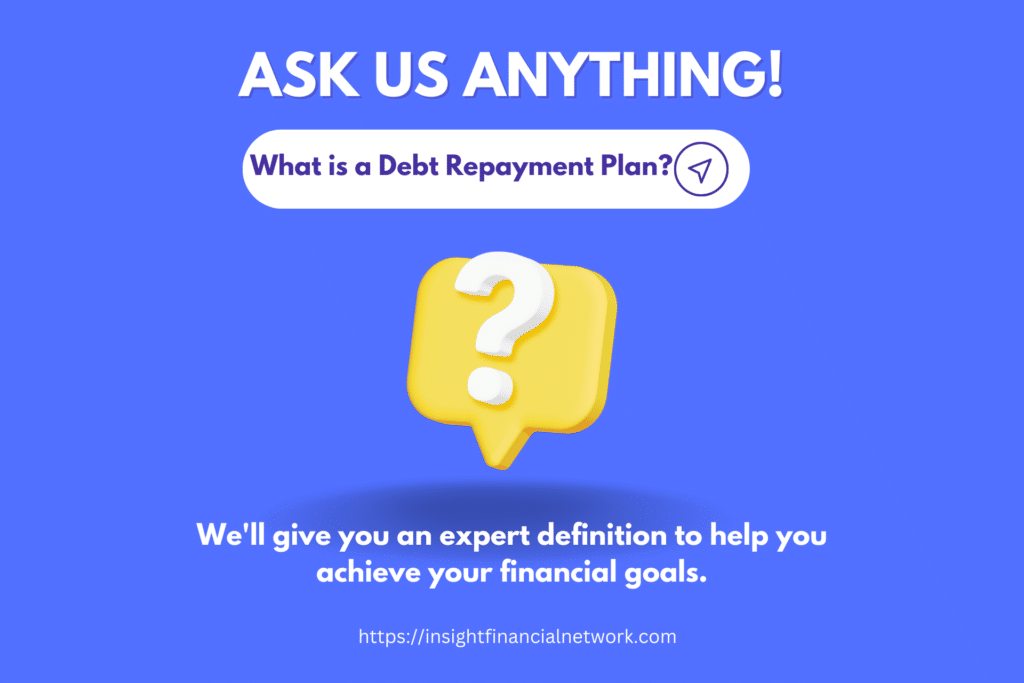Definition Explained with Real-life Examples and Strategies for Success
What is a Debt Repayment Plan? Here’s What You Should Know
Are you struggling with mounting debts and unsure of how to tackle them effectively? Look no further! In this post, we’re going to break down the debt repayment plan definition for you in a way that’s easy to understand.
By the end of this read, you’ll have a clearer idea of what a debt repayment plan is, how it can help you regain control of your finances, and why having one in place is crucial. So, buckle up and prepare for the first step towards a more financially secure future.
Keep reading to learn more about this essential financial tool that can make all the difference in your life.
Here’s What You Will Find:
Debt Repayment Plan Definition
A debt repayment plan is a strategic and systematic approach to paying off your outstanding debts, usually involving monthly payments made toward each debt you owe. This plan is tailored to your unique financial situation, considering factors such as your income, expenses, and the amount of debt you have accumulated.
The main objective of a debt repayment plan is to help you manage your debts more effectively, reduce financial stress, and eventually become debt-free.
Debt repayment plans generally consist of the following key components:
List of debts
Compile a comprehensive list of all your outstanding debts, including credit cards, personal loans, student loans, and any other financial obligations you have.
Prioritization
Arrange your debts in order of priority based on factors such as interest rates, outstanding balances, and potential penalties for late payments. You can choose between two popular methods to prioritize your debts: the “avalanche method,” where you pay off the debt with the highest interest rate first, or the “snowball method,” where you start with the smallest debt and work your way up.
Monthly payment allocation
Determine how much you can afford to pay towards each monthly debt, considering your income, necessary living expenses, and other financial commitments. Make sure you’re at least covering the minimum payments required for each debt.
Timeline
Estimate how long you will pay off each debt and become debt-free. This will help you stay motivated and focused on your financial goals.
Review and adjust
Regularly review your debt repayment plan and make any necessary adjustments to accommodate changes in your financial situation or unexpected expenses.
Following a well-structured debt repayment plan can gradually reduce your debt burden, improve your credit score, and regain control over your finances. It’s essential to remain disciplined and committed to your plan to achieve the best possible results.

Real-Life Example:
Imagine you’re juggling multiple debts, such as a credit card balance, a student loan, and an auto loan. Here’s a real-life example of how you could create and implement a debt repayment plan to tackle these debts:
- List of debts:
Credit card balance: $5,000 at an 18% annual interest rate
Student loan: $20,000 at a 6% annual interest rate
Auto loan: $10,000 at a 4% annual interest rate
- Prioritization: Using the avalanche method, you decide to prioritize your debts in the following order:
Credit card balance (highest interest rate)
Student loan
Auto loan
- Monthly payment allocation: After evaluating your income and expenses, you determine that you can allocate $800 per month towards debt repayment. You decide to allocate the minimum payment for each debt and put any remaining funds towards the highest priority debt (in this case, the credit card balance).
Credit card minimum payment: $100
Student loan minimum payment: $200
Auto loan minimum payment: $200
Extra payment towards the credit card balance: $300
- Timeline: Based on your payment allocation, you estimate it will take:
14 months to pay off the credit card balance
94 months to pay off the student loan
48 months to pay off the auto loan
- Review and adjust: After paying off the credit card balance in 14 months, you can now allocate the extra $400 ($100 minimum payment + $300 extra payment) towards the student loan, making your new monthly payment $600. This will help you pay off the student loan faster.
By sticking to your debt repayment plan, you can efficiently tackle your debts one by one, ultimately becoming debt-free and improving your financial health.
Final Thoughts
Understanding the definition of a debt repayment plan is essential to managing your finances and achieving a debt-free life. You can effectively regain control of your financial situation by creating a customized plan that prioritizes your debts, allocating monthly payments, and setting a clear timeline.
Remember, it’s crucial to review and adjust your plan as needed and, most importantly, to borrow responsibly in the future. By being proactive and disciplined in your approach, you can embark on the path to financial freedom and enjoy the peace of mind that comes with it.

